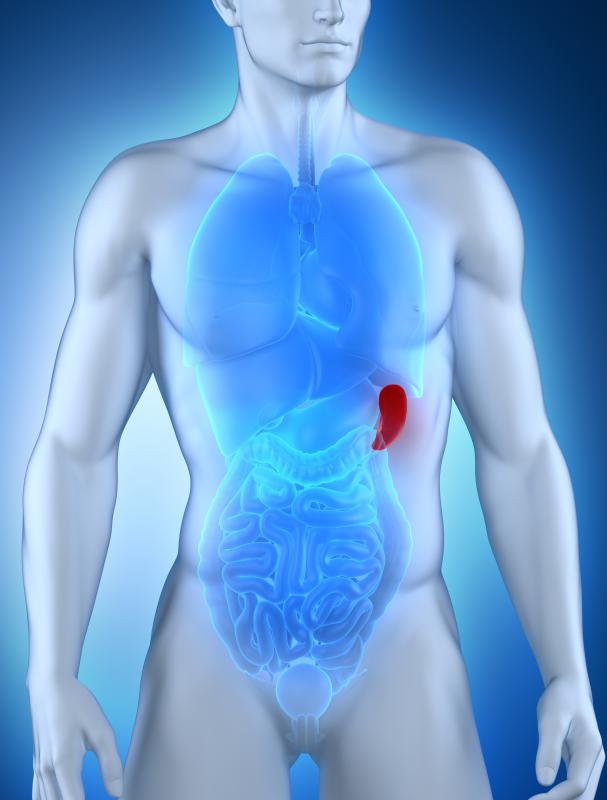At WiseGEEK, we're committed to delivering accurate, trustworthy information. Our expert-authored content is rigorously fact-checked and sourced from credible authorities. Discover how we uphold the highest standards in providing you with reliable knowledge.
What are the Different Types of Idiopathic Thrombocytopenic Purpura Treatment?
Idiopathic thrombocytopenic purpura, or ITP, is a disease in which the immune system produces antibodies that attach to platelets, leading to their destruction. Platelets are cell fragments which are needed for normal blood clotting and, when there are too few, symptoms of bleeding and bruising may occur. ITP affects both adults and children. In mild cases, idiopathic thrombocytopenic purpura treatment may not be necessary but, when the condition is more serious, treatment may involve taking steroid medication or undergoing surgery to remove the spleen. Other options may include the use of drugs to suppress the immune system, immunoglobulin injections, or platelet transfusions.
When ITP occurs in childhood, most often there are no symptoms. The disease commonly develops following a viral infection and is diagnosed with a blood test which allows the number of platelets to be assessed. Even if symptoms such as nose bleeds and bruises occur, the condition frequently resolves on its own within a number of weeks. A distinctive sign, a rash of red spots known as purpura, may appear, though typically this also disappears with other symptoms. Idiopathic thrombocytopenic purpura treatment in children is only necessary if symptoms are severe and the platelet count is very low.
Rarely, excessive bleeding occurs, requiring emergency treatment. Platelet transfusions may be carried out urgently. This increases the platelet count in the short term while other therapies are being administered.

In adults, ITP develops slowly and, while often no symptoms are experienced, bruising, purpura, and bleeding may occur. Idiopathic thrombocytopenic purpura treatment may initially involve taking steroid medication and immunoglobulin injections. Steroids may be taken in the form of tablets or syrup, and immunoglobulin, a protein, may be injected directly into a vein. Both these types of idiopathic thrombocytopenic purpura treatment work by increasing the number of platelets in the blood.

When non-surgical idiopathic thrombocytopenic purpura treatments fail, surgery may be carried out to remove the spleen. As the spleen destroys platelets which have antibodies attached, its removal leads to an increase in platelet numbers. After the operation, it is necessary to take antibiotics daily, as there is an increased risk of infections when the spleen, which is part of the immune system, is gone.

If removal of the spleen fails to improve the condition, there is no single best idiopathic thrombocytopenic purpura treatment to take next, but a range of different medications may be tried. These include steroids, immunoglobulins, and drugs which suppress the immune system. Although occasionally the disease is fatal, most adults and children recover, with around a third of adults suffering from ITP long-term.
AS FEATURED ON:
AS FEATURED ON:














Discussion Comments
What about mentioning the new TPO drugs that work by forcing the body to make more platelets?
Post your comments